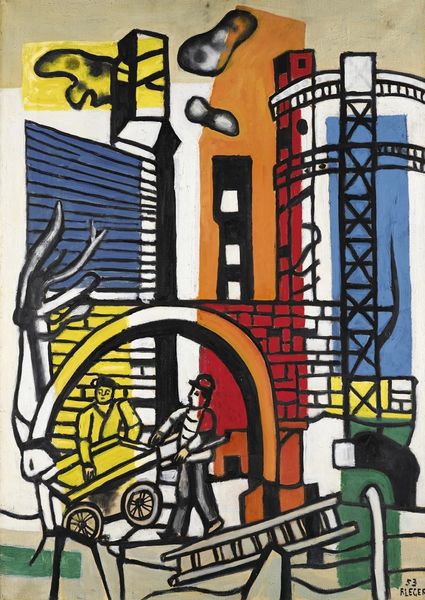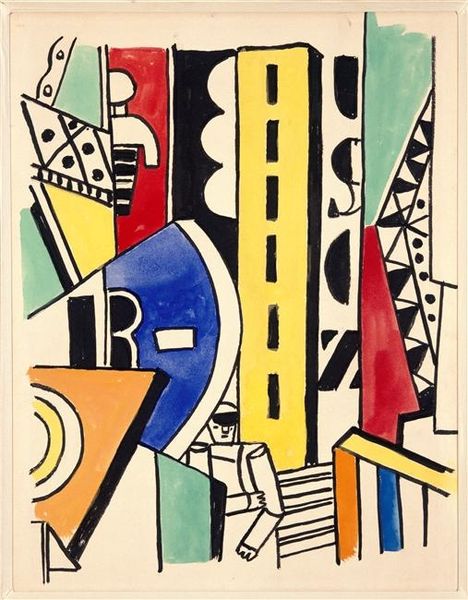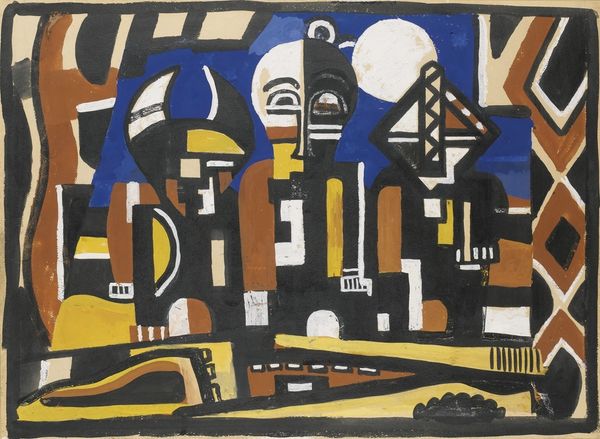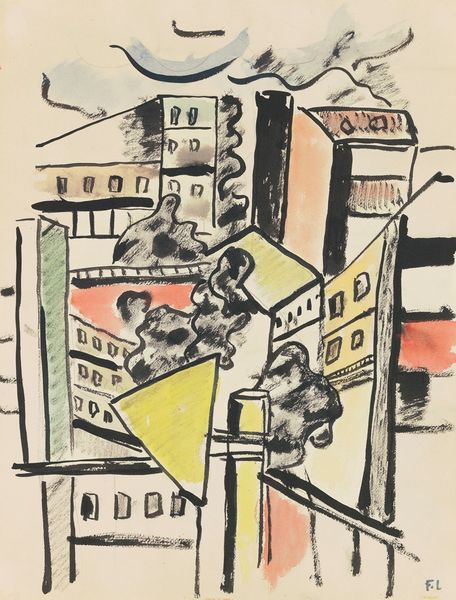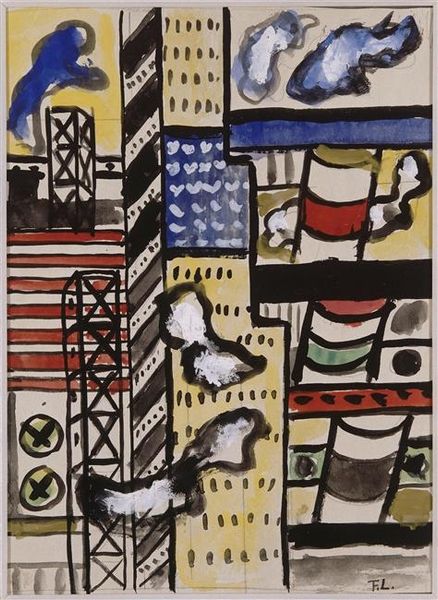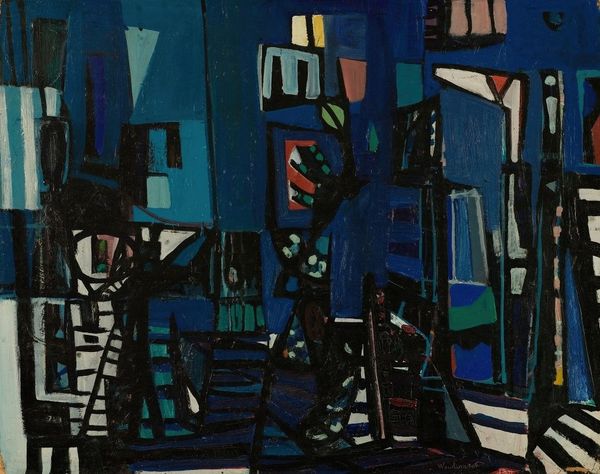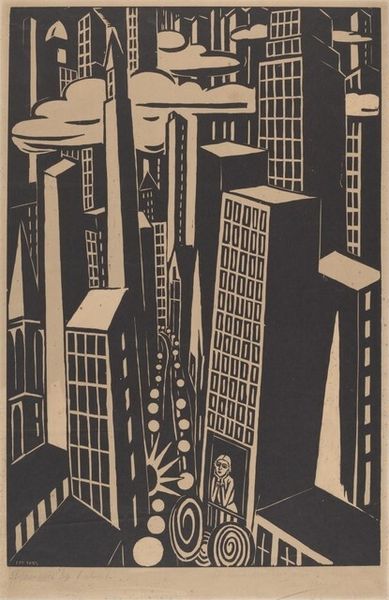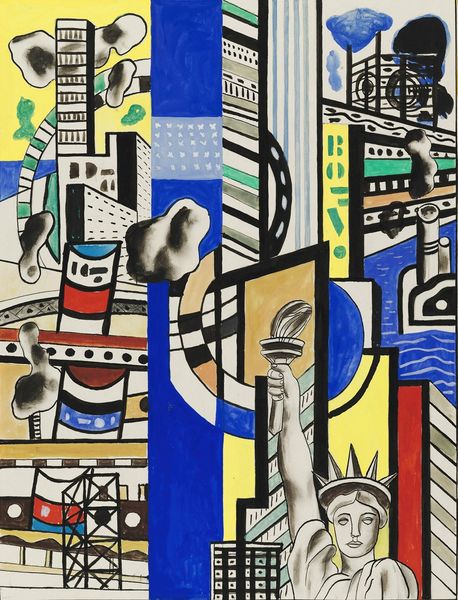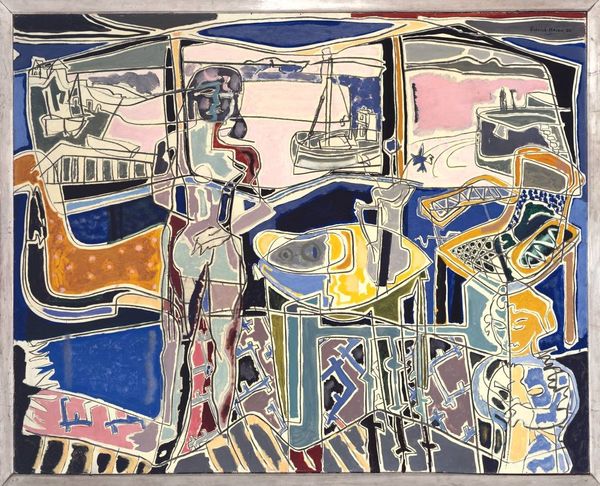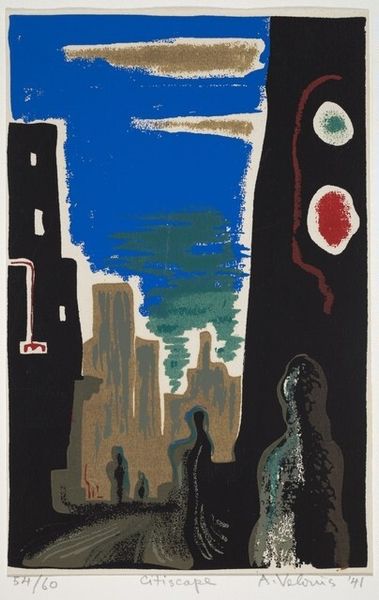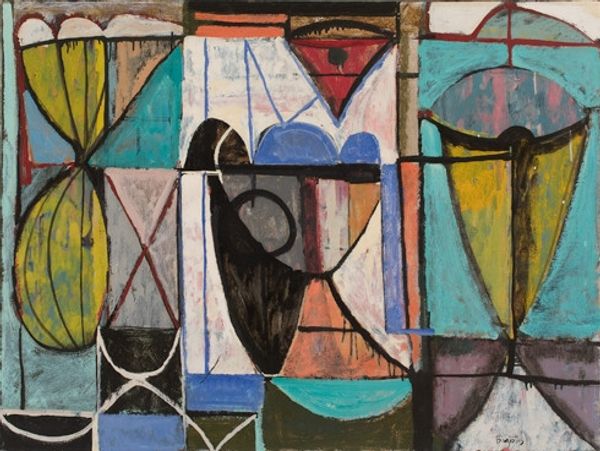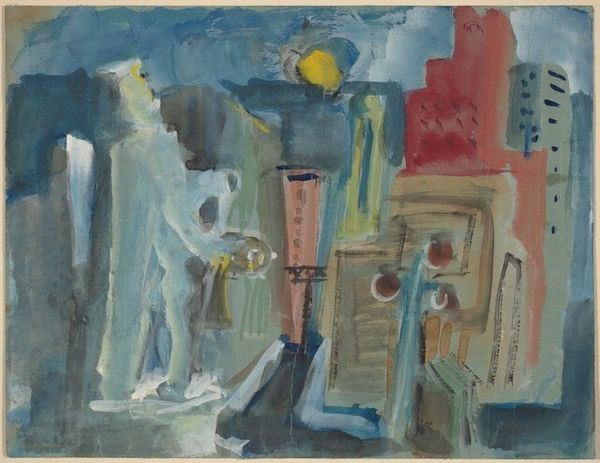
Copyright: Modern Artists: Artvee
Curator: Fernand Léger’s 1939 work, "Souvenir de New York," painted with oil on canvas, certainly demands attention. What are your first impressions? Editor: Chaos. Organized chaos, perhaps. There’s a sense of frenetic energy—almost overwhelming—yet the use of primary colors keeps it strangely buoyant. Curator: It is intriguing how Léger synthesizes urban dynamism with abstract geometric forms, isn’t it? The composition seems to suggest simultaneity, various city elements coexisting on the canvas, each competing for our attention. Editor: Indeed. Those blues feel significant though; perhaps it’s just the immediate vibrancy, but they dominate, almost attempting to reign in that chaos you mentioned. Is there any symbolism here related to American identity at the time, maybe? Curator: Well, notice how Léger employs stark contrasts and bold lines. These aren't representational skyscrapers in any traditional sense. He distills the essence of architectural structure into basic shapes, perhaps mirroring the modernist desire for functional efficiency. Editor: I also find it telling he labels this a 'Souvenir.' Souvenirs capture essential feelings of an event or place; what visual cues create that emotional connection? The ferris wheel, maybe representing the constant whirl of human experience? The "POP" signage of consumer culture starting to surge at that point? Curator: The artist’s perspective of the ferris wheel introduces visual rhythms to disrupt an otherwise rigid arrangement, acting almost as a hinge element to the planar logic of the painting. It certainly contributes to an experiential texture here. Editor: Looking closely at the wheel design, it definitely hints at innovation while maybe commenting on repetition—two core values or perhaps pitfalls of modernity. Regardless, he truly invites a symbolic engagement. Curator: Undoubtedly. Léger provides us with much more than a mere landscape; the painting emerges as a commentary on the accelerating speed and fragmented quality of modern life. Editor: Agreed, Fernand Leger truly created a time capsule in geometric abstraction. It encourages deeper reflection on urbanization and American culture.
Comments
No comments
Be the first to comment and join the conversation on the ultimate creative platform.
